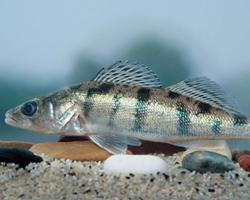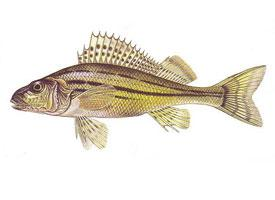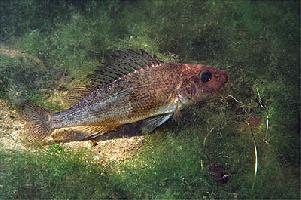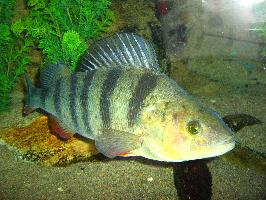
Súlyok és méretek
| Hossz | 60 cm |
|---|---|
| Súly | 3 kg |
Biológiai adatok
| Élettartam | 10 r |
|---|
Veszélyeztetettség
| Veszélyeztetett |
Állatleírás
The Volga pikeperch, scientifically known as Sander volgensis, is a fascinating species of freshwater fish belonging to the Percidae family, which is notably recognized for its predatory lifestyle and distinct physical attributes. This species is primarily found in the vast river systems and connected water bodies of Eastern Europe, with a significant presence in the Volga River basin, hence its name. The Volga pikeperch plays a crucial role in its natural habitat, serving as both predator and prey within its aquatic ecosystem.Characterized by its elongated body, the Volga pikeperch can reach impressive lengths, with mature adults often exceeding 50 centimeters. The body of the Volga pikeperch is streamlined, an adaptation that facilitates swift movement through water, enabling it to ambush prey effectively. Its coloration is predominantly silver-gray, with a darker dorsal surface that gradually lightens towards the belly. This color gradient not only adds to its visual appeal but also serves as a form of camouflage, blending seamlessly with the riverbed to evade predators and surprise prey.
The dorsal fin of the Volga pikeperch is divided into two distinct parts, a feature it shares with other members of its genus. The first part contains spiny rays, serving as a defense mechanism against potential predators, while the second part is composed of softer rays, aiding in navigation. Its jaws are equipped with sharp, conical teeth, designed to grasp slippery prey such as fish and crustaceans, which constitute the majority of its diet.
Volga pikeperch are known for their solitary nature, especially outside the breeding season, when they become highly territorial. During spawning, which occurs in the spring as water temperatures begin to rise, they migrate to specific spawning grounds, often located in tributaries or shallow areas of lakes. Here, the females lay thousands of eggs, which are then fertilized by the males. The eggs are adhesive and attach to the substrate, where they remain until hatching.
The species has significant economic importance in its native range, both as a target for commercial fisheries and as a prized catch among sport fishermen. Its flesh is highly valued for its taste and nutritional content, making it a popular choice for culinary use. However, like many freshwater species, the Volga pikeperch faces threats from habitat degradation, pollution, and overfishing, which have led to a decline in some populations.
Conservation efforts are crucial to ensure the sustainability of the Volga pikeperch populations. These include implementing fishing quotas, protecting critical habitats, and promoting practices that minimize environmental impact. Through such measures, it is hoped that the Volga pikeperch will continue to thrive in its natural habitat, maintaining its role in the ecosystem and its value to humans.
In summary, the Volga pikeperch (Sander volgensis) is a remarkable species, admired for its adaptability, predatory efficiency, and economic value. Its existence highlights the intricate balance of freshwater ecosystems and underscores the importance of conservation efforts to preserve these vital natural resources for future generations.
Hasonló állatok
Új állatfotók
Top 10 állat
- Dolphin gull (Leucophaeus scoresbii)
- Diana monkey (Cercopithecus diana)
- Moustached guenon (Cercopithecus cephus)
- Galápagos tortoise (Geochelone nigra complex)
- Japanese macaque (Macaca fuscata)
- Stone loach (Barbatula barbatula)
- Russian tortoise (Testudo horsfieldii)
- Greek tortoise (Testudo graeca)
- Common flying dragon (Draco volans)
- Vendace (Coregonus albula)


